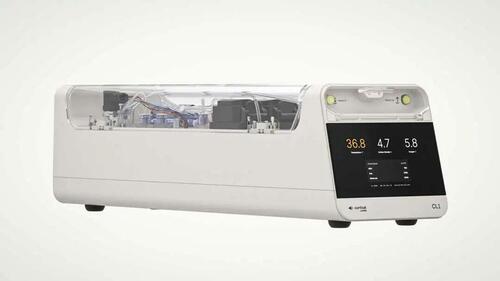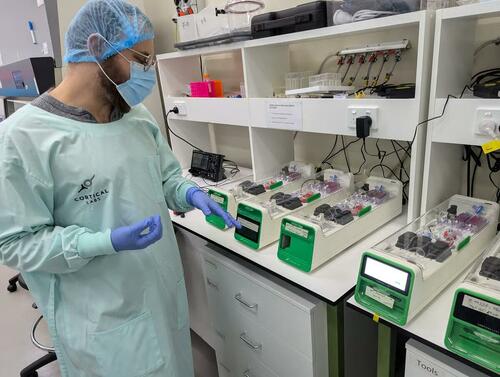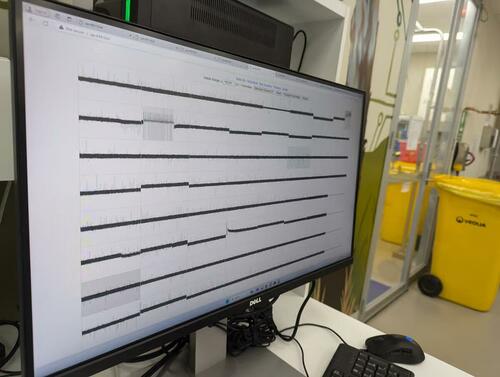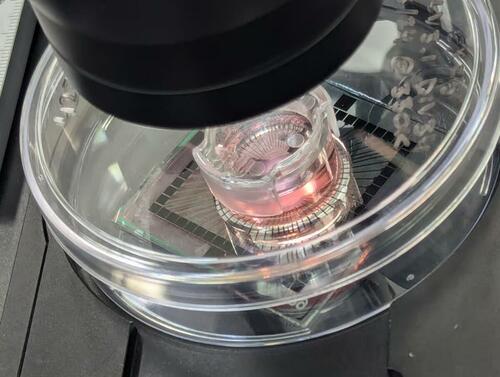
Meet The Dystopian Startups Making 'Biological Computers’ From Human Cells
Picture a dystopian future where computers don’t just mimic human thinking – they’re powered by actual human brain cells. That future is taking shape in a Cambridge, England, lab, where a groundbreaking device called CL1 is blending biology and technology in ways that could transform how we compute. Developed by Australian startup Cortical Labs and U.K.-based bit.bio, this shoebox-sized machine houses 200,000 lab-grown brain cells wired to silicon circuits, creating a “biological computer” that’s already turning heads.
 Cortical Labs’ CL1
Cortical Labs’ CL1Unlike traditional computers, which guzzle energy, CL1 operates with the efficiency of a human brain. “Our brains process information using a fraction of the power that modern electronics need,” Hon Weng Chong, CEO of Cortical Labs, told FT. “This could open doors to smarter robots, stronger cybersecurity, and immersive virtual worlds.”
Oh, joy.
Low-energy computing has fueled a race to develop biological systems, with Cortical Labs leading alongside competitors like FinalSpark in Switzerland and Biological Black Box in the U.S.CL1’s brain cells, grown from human skin-derived stem cells, are carefully arranged in layers: one type sparks electrical activity, while another keeps it in check. “It’s like balancing a gas pedal and brakes,” Chong explains. This precision, says bit.bio’s Tony Oosterveen, gives CL1 an edge over rival approaches using less uniform “mini-brains.” The result is a platform for testing how brain cells handle information, with early experiments already yielding insights for neuroscience and drug development.
 Photo: Chris Radburn/FT
Photo: Chris Radburn/FTOne of CL1’s quirkiest feats? Playing the classic video game Pong. Its predecessor, DishBrain, learned to move a virtual paddle by receiving electrical “rewards” for good moves and disruptive noise for mistakes. CL1 has taken this further, revealing how substances like alcohol impair performance or how epilepsy drugs, like carbamazepine, boost it. “We’re learning how to ‘program’ these cells,” Chong says, noting that his team is even teaching them to recognize numbers, like distinguishing a nine from a four.
 Kagan and team testing the CL1 units, which are built to maintain the health of the cells living on the silicon hardware (New Atlas)
Kagan and team testing the CL1 units, which are built to maintain the health of the cells living on the silicon hardware (New Atlas)“This is the first device that can consistently measure what neurons can do,” says Mark Kotter, a Cambridge professor and bit.bio founder. Karl Friston, a neuroscientist at University College London, sees it as a tool for groundbreaking experiments, while Johns Hopkins’ Thomas Hartung praises its use of games like Pong to benchmark biological computing.
 In the lab, the early CL1 model is put through its paces as the team monitors its response to stimuli (prompts) New Atlas
In the lab, the early CL1 model is put through its paces as the team monitors its response to stimuli (prompts) New AtlasChong recognizes the ethical challenges that could emerge if biological computers and neuron cultures begin to show early signs of consciousness.
“[T]hese systems are sentient because they respond to stimuli and learn from them but they are not conscious. We will learn more about how the human brain works but we do not intend to create a brain in a vat.”
 The cells form an entirely new kind of artificial intelligence New Atlas
The cells form an entirely new kind of artificial intelligence New AtlasThe CL1 units are slated to retail for around $35,000 each and are expected to be broadly available by late 2025, according to a report.
Tyler Durden
Mon, 06/30/2025 – 04:15














